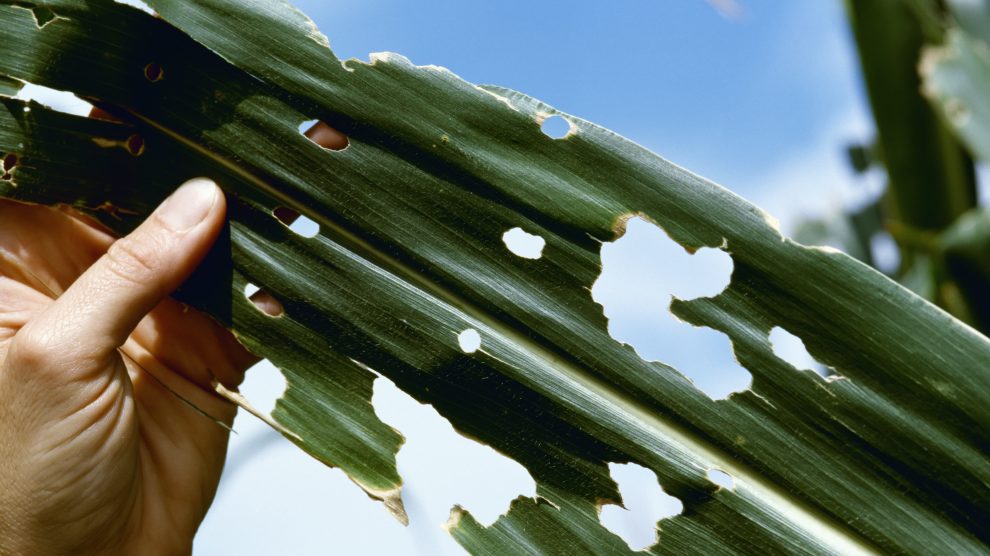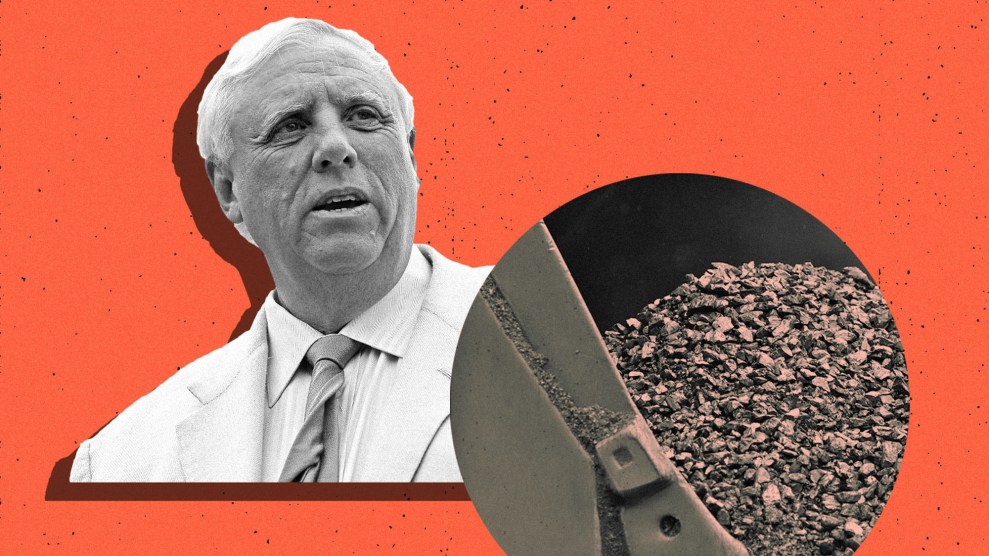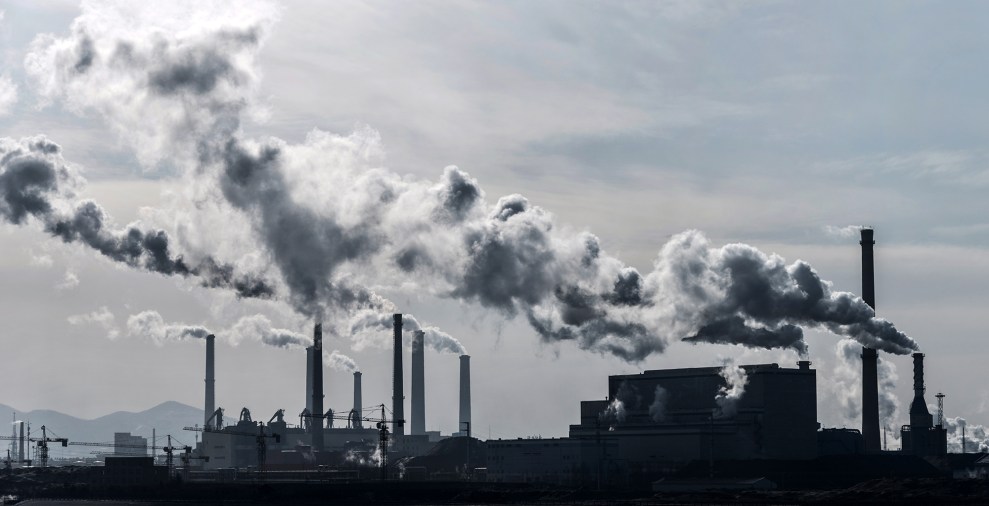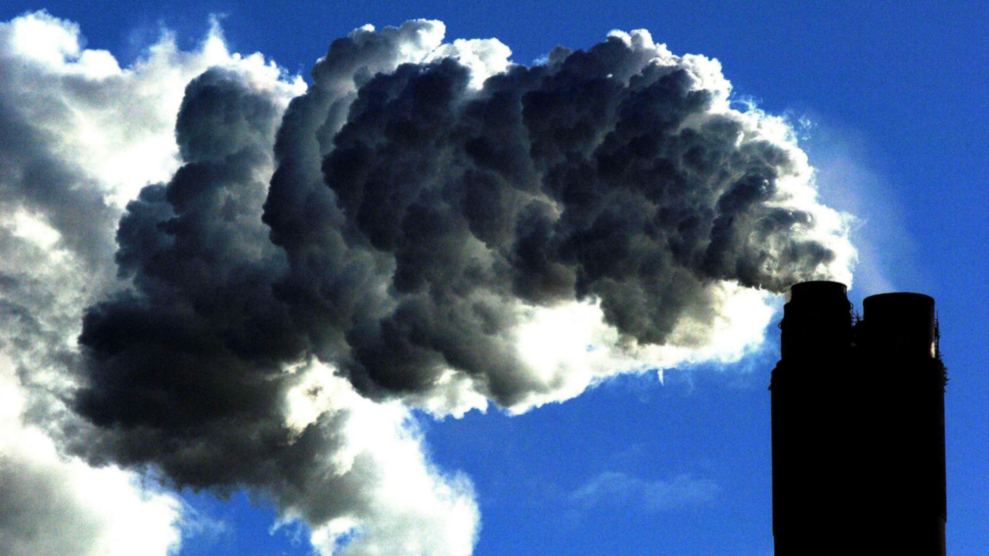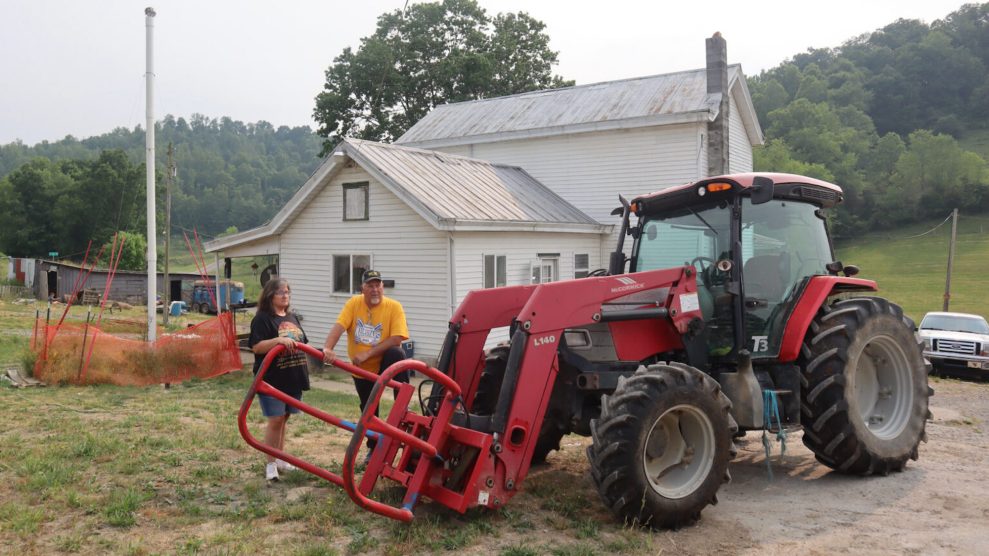
Melissa and Jim Nestor at their farm in Taylor County, Virginia. James Bruggers
This story was originally published by Inside Climate News and is reproduced here as part of the Climate Desk collaboration.
Month-old kittens scamper around, tumbling into one another on the grass. A black-and-white border collie, Maggie, nestles against the side of a farmhouse and nurses a puppy. Beef cattle graze on the hillside behind the house, which has been vacant since last summer—when, without warning, the water well went dry.
At the time, Jim and Melissa Nestor were raising three boys on their farm in a lush green valley three miles south of Thornton, a town along US Highway 50 with a church, a towing service, a post office, and no stoplight.
When the Nestors disconnected the well’s pump to see if that was the problem, they heard a loud sound: “Woooshhhh,” Melissa Nestor recalled, blowing air out of puckered lips.
“It was like, whoa,’’ Nestor said. “Gas was coming up out of the well. It’s a wonder we didn’t have a major catastrophe right there, like an explosion caused by a spark from a power tool.”
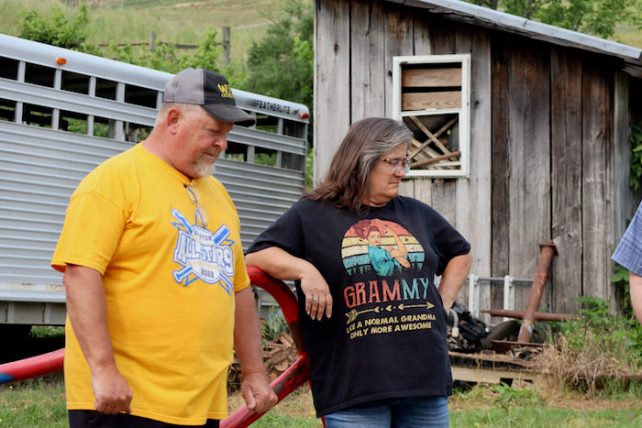
Jim and Melissa Nestor.
James Bruggers
From a coal mine about 350 feet below, methane had forced its way up through bedrock fissures and into the shaft of the well.
At that moment last August, the Nestors’ lives—which revolved around caring for their livestock and pets and supporting their three sons’ activities in baseball, wrestling, football and 4-H—were changed forever.
Now the Nestors are living in temporary quarters a mile away while their future hangs in the balance, depending on the outcome of a lawsuit the couple has filed in Taylor County Circuit Court against Arch Resources of St. Louis, the nation’s second-largest coal mine operator.
The Nestors’ case is one of at least eight still pending that contend that Arch’s Leer Mine in Taylor County has damaged homes and property as a result of mining practices that can cause land to sink, alter ground and surface waters and, in the Nestors’ case, release dangerous methane.
The lawsuits argue, among other allegations, that Arch’s mining activities violated state law that directs mining companies to “protect off-site areas from damage,” “eliminate fire hazards” and “minimize the disturbance of the prevailing hydrologic balance at the mine site and in associated off-site areas,” both during and after mining operations.
Those lawsuits follow more than two dozen others filed in Taylor County in recent years in which legal settlements were reached, according to Hunter Mullens, the attorney in Philippi, West Virginia, who is handling all of the cases for plaintiffs suing Arch.
Mullens said he anticipated more lawsuits as mining continues to affect many of the several hundred people who live above the Leer Mine and as Arch expands operations in Leer South, a coal mine based in neighboring Barbour County that began operations in 2021.
For families that live on top of coal mines, the potential for methane, a colorless, odorless, flammable and explosive gas, to work its way to the surface is an ever-present fear. Known as an explosive threat to miners deep underground, methane vapors have also caused fires or blasts in or near homes when it has leaked to the surface.
Pleas last summer from the Nestors to the West Virginia Department of Environmental Protection and the US Office of Surface Mining Reclamation and Enforcement to hold Arch responsible were rebuffed. Both agencies said that testing on a single day last September inside their home detected no methane, and as a result, they declared that there was no “imminent” threat.
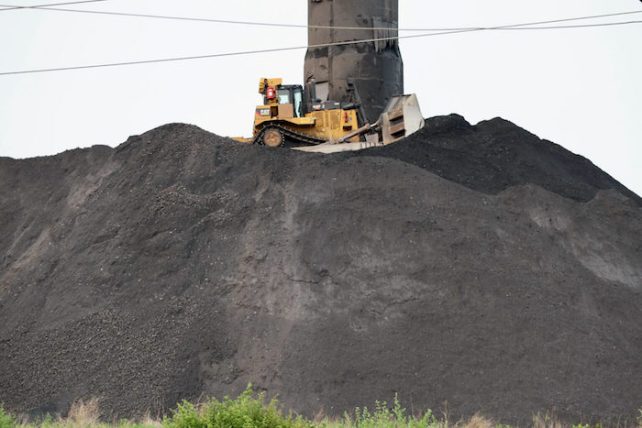
A bulldozer moves coal at a train-loading facility for the Arch Resources Lear South mine in Barbour County, West Virginia.
James Bruggers
Methane is also a potent factor in climate change, around 80 times more potent than carbon dioxide at warming the planet over a 20-year period.
While the US coal mining industry has been on the decline for years as electric utilities embrace cheaper natural gas and cleaner energy sources, the type of coal mined by Arch at its Leer mines in West Virginia remains a prized commodity. It is of such a quality that it is used for making steel and is sold at a premium price.
Economists see a continued market for this coal, called metallurgical or met coal, for decades to come—raising the possibility of ever greater methane emissions.
“One comes away with a clear sense that everything we know about how harmful our dependence on coal is, to our climate and our health, is made more so by this recognition that are also methane emissions associated with it,” said Rachel Cleetus, the policy director for the Union of Concerned Scientists’ climate and energy program. “At the same time, we are not holding accountable the companies that have caused this pollution.”
Arch declined to comment on the lawsuits and the methane emissions. But in its most recent annual report, filed with the Securities and Exchange Commission, the company touted its commitment to safety and local communities.
“We believe that our long-term success depends upon achieving excellence in mine safety and environmental stewardship; conducting business in a most ethical and transparent manner; investing in our people and the communities in which we operate; and demonstrating strong corporate governance,” Arch wrote.
The Nestors left their home after they were warned to get out by Jack Spadaro, a former top federal mine safety engineer who works as a consultant for coalfield residents, workers and their lawyers.
The water well sits nine feet from the back of their house. After the couple reported their experience, Arch installed a pipe in the well that extends 20 feet into the air in an attempt to help the methane escape at a level high enough off the ground that it would pose less of a threat. But the pipe, which continues to release methane, is too close for comfort for the Nestors, who worry about its proximity to their back porch and their kitchen and bedroom windows.
The state department of environmental protection (DEP) inspected the site on Sept. 9, and its report mentioned methane concentrations as high as 89 percent in the vent. Testing on Aug. 19, 2022, inside the home by Moody and Associates, a Pennsylvania-based consulting firm hired by Arch attorneys, had also detected methane, but at far lower levels, 120 parts per million, or less than 1 percent, according to the consultants. That’s “well short of the 5,000 ppm concentration that would prompt an evacuation of the residence,” Moody concluded.
Citing that report, Arch’s attorneys stated in response to the Nestors’ lawsuit that while methane had been detected inside the house, the levels were not high enough to require any “immediate” action. “Defendants deny that their mining operations have damaged or contaminated [the Nestors’] property,” the company said.
Spadaro counters that Moody’s conclusion “is not an accurate statement.” In mines, he said, concentrations above 1 percent signal a potentially dangerous condition, and a level of 2 percent requires mines to be shut down until adequate ventilation can be restored.
He cited a technical guide issued by the federal Department of the Interior’s Office of Surface Mining and Reclamation. It identifies methane levels in homes above mines that exceed 1 percent as a concentration that may “necessitate remedial actions due to potential accumulation of explosive levels of methane.”

Jack Spadero, a former top federal mine safety engineer, works as a consultant for coalfield residents, workers, and their lawyers.
James Bruggers
For now, the Nestors are relying on advice from Spadaro, who has been investigating mine disasters for more than 50 years, and Mullens, whose small-town legal practice has embraced the goal of holding coal mining companies accountable for the full range of impacts to people who live above mines.
Melissa Nestor, who works as a school bus driver, said the family moved out because “I was scared to death for my kids, and for us.’’
“When can you sleep in a house not knowing when a bigger burst of methane is gonna come into that location? I just can’t sleep knowing that anytime it could bring up enough to blow us up, or bring up enough to take the oxygen out of the air and we just never wake up.”
Spadaro says that the Nestors have reason to be concerned. “Some of the worst disasters that have killed hundreds of miners were explosions that were initiated by methane,” he said.
The safety consultant was referring to the 2006 disaster at the Sago Mine, around 60 miles south of Thornton, in which 13 miners were trapped for nearly two days after an explosion and cave-in. Only one survived. “That was an example of a methane explosion in an abandoned part of a mine, where there was a methane cloud,” Spadaro said.
He also cited a 2017 federal court settlement between a West Virginia couple and Pinnacle Coal after an explosion in a house in Wyoming County that the plaintiffs attributed to methane from an underground mine. When an occupant started up a washing machine, “methane gas exploded, causing “serious damages to the interior and exterior of the home,” according to court records.
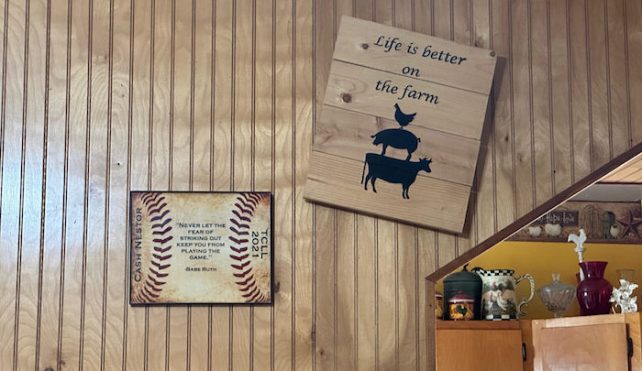
Jim and Melissa Nestor’s home in Taylor County, West Virginia.
James Bruggers
At its Leer mines, Arch uses a controversial mechanized technique, longwall mining, designed to maximize the amount of coal it can extract. Rather than harvest “rooms” of coal, leaving “pillars” of coal behind as support, longwall mining involves using a large bladed machine to shear off a slice of coal as wide as 1,200 to 1,500 feet that extends up to a mile in length, allowing the rock ceiling or “overburden” to collapse behind it.
Spadaro said that methane can coalesce in those mined areas of collapsed rock and waste rock and move unpredictably until it finds a way to escape, a situation that he suspects occurred in the Leer mine. That would put the Nestor family in a precarious position, he said.
“If you had a house and you had children in it, and you were nine feet from a pipe that was venting methane at what could be explosive levels, I don’t think anybody would want to live near that,” Spadaro said.
Mullens, the attorney for the Nestors, said the case comes down to a question of risk and responsibility. “Does the coal company take the risk, as they’re making money off mining this coal?” he asked. “Or do people like the Nestors, who have three children and are trying to raise a family, take the risk? Well, right now, they’re taking the risk.”
And Arch, he maintains, bears the responsibility.
As coal production in the United States dropped by almost 50 percent over the last decade, with utilities switching to natural gas and to renewable energy alternatives like wind and solar energy, met coal has been a bright spot for mining. With its value to the global steel industry, it can sell for double or triple the price of the coal used by power plants.
At many steel mills, especially those overseas, met coal is converted into coke, a high-carbon ingredient, in a 1,000-degree-plus manufacturing process. The coke is mixed with iron ore and limestone to make molten iron, which is then further treated to make steel.
West Virginia is among the major producers of met coal in the United States, supplying 63 percent of what is distributed to the nation’s coke plants, according to a recent report from West Virginia University’s Bureau of Business and Economic Research.
Met coal mining generated $4.2 billion in revenue for mining companies operating in West Virginia and nearly $10 billion in total economic activity in the United States in 2019, the most recent year for which numbers are available. Such operations employed around 6,900 West Virginia miners.
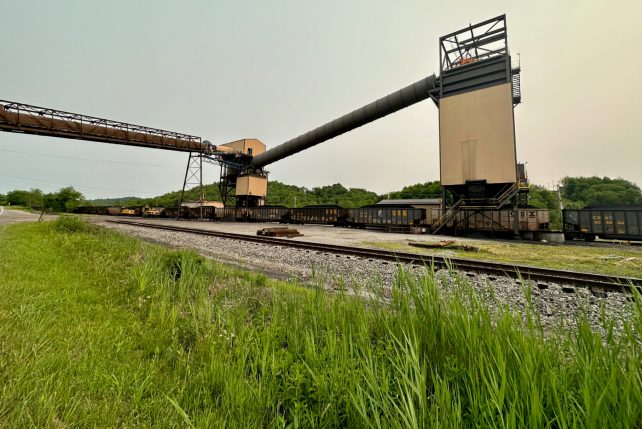
A train in Barbour County, West Virginia, carrying newly loaded up coal from Arch Resources Lear South mine.
James Bruggers
Most of the coal gets exported to major steelmaking countries like China, India or Brazil.
Together, the Leer Mine and the Leer South Mine “anchor” Arch’s metallurgical business, according to the company’s annual report, and produced about 6 million tons of coal last year. That amounted to around 78 percent of the company’s met coal output and 8 percent of its total coal production in 2022.
Together, the two mines have 109 million tons of reserves in a coal seam that underlies at least 143 square miles of northern West Virginia.
While a boon to the state’s economy, longwall mining for met coal wreaks dramatic changes on the surface. The ground sinks. Local hydrology can forever change, altering the flow and availability of groundwater or surface waters. Methane can accumulate.
“When they mine the coal, the land drops three to four feet,” said Dennis Fisher, an engineer with experience in oil, gas and coal-mine permitting who is helping Mullens with the Nestors’ and other lawsuits. “It’s hard to believe, but that’s what happens. Houses, trees, roads, ponds: Everything subsides from where it was before.’’
Fisher has been investigating reports of methane emissions from coal mines in the region and has found the impacts and the resulting concerns to be clustered in certain areas. In Taylor County, “three or four years ago, people started having a lot of issues with subsidence damage to their homes,” he said. “And then after that, there has been a methane issue, where methane has been venting from these old water wells.”
Methane builds up in coal seams as organic matter turns into coal, a process that can take millions of years. While it became a threat to the Nestors, it is also part of a global climate crisis.
Globally, coal mining emits 52.3 million metric tons of methane per year, exceeding emissions from the oil (39 million metric tons) and gas (45 million metric tons) sectors, according to a 2022 report by Global Energy Monitor, a California-based nonprofit that tracks the energy industry.
The estimated global emissions of methane from coal is roughly equivalent to the climate impact of the carbon dioxide emissions of all coal plants in China, the group said. Yet methane emissions from coal mines have “dodged a lot of scrutiny,” said the report’s author, Ryan Driskell Tate.
Cleetus, the climate and energy specialist at the Union of Concerned Scientists, maintains that methane emissions from all sources are generally underreported, including those from coal mines.
Federal and state rules limit methane concentrations inside mines to protect miners, but there are no government regulations limiting the amount of methane that gets blown out of coal mines into the atmosphere to protect miners, or what leaks into the air on its own.
A spokeswoman for the federal EPA said she was unaware of any effort by the agency to move toward adopting limits on methane emissions from coal mines.
Cleetus said the federal government has instead focused on reducing the methane coming from abandoned coal mines. President Joe Biden’s Infrastructure Investment and Jobs Act of 2021 provides around $11 billion
In spending over 15 years to address a range of problems caused by abandoned coal mines, including leaking methane.
But that won’t be nearly enough, said Cleetus, who argues that the federal government needs to do more. “This is an important moment for the EPA to think how to track methane and hold these companies responsible,” she said. “The climate is suffering, as are local communities.”
The problems in Taylor County can be traced back decades, to when coal companies bought mineral rights from under landowners, often for not much money. Generations later, today’s landowners are stuck with the consequences.
Conflicts between mining companies and landowners were more intense before Congress amended the 1977 Surface Mining Control and Reclamation Act in 1992 to offer some protections, such as requiring coal companies to repair damage to homes or certain other structures or to compensate the homeowners, said Joe Pizarchik, a Pennsylvania attorney who ran OSMRE, the federal Office of Surface Mining and Reclamation, from 2009 through 2017, during the Obama administration. Yet the battles persist.
If a property owner’s water supply has been affected, the law requires coal companies to provide a replacement source. Companies are also supposed to let owners know they are going to mine underneath their property and conduct pre- and post-mining surveys to document any damage.
The Nestors’ lawsuit and others say that Arch has not lived up to the requirements of the law. Some homeowners claim, for example, that the company failed to conduct the surveys for subsidence damage.
Officials at OSMRE, which also oversees impacts from surface or strip mining, declined to answer questions about how it regulates the impact of underground mining on anyone who lives above it, including the West Virginia litigants, referring questions to the state DEP. A spokesman for the DEP said he would not comment because of the litigation, even though the state is not a defendant in the eight active lawsuits filed by Mullens.
State officials stated that no longwall mining had taken place directly under the home.
After its Sept. 14 test on the family’s home found no methane, OSMRE ruled out a problem, writing that “no imminent harm conditions exist for methane at this time,” according to an Oct. 12 letter from the federal agency to Jim Nestor.
But Spadaro said that methane testing on a single day is meaningless and that Arch’s mining activity was close enough to presume that it caused the damage, with the home situated within 30 degrees of the edge of the mined area underground.
“They have willfully failed to protect the public,” he said.
The law office that Mullens shares with his wife, Kate Mullens, in Philippi occupies a former appliance store on Main Street, in a downtown where history stands out. A distinctive covered bridge spans the Tygart Valley River, a successor to the one built there in 1852. Every year, the city holds a re-enactment of the first Civil War land battle in West Virginia, won by Union troops.
A map of US railroads in the Civil War era stands in a large frame on the floor in the law office’s lobby, and a photograph of Abraham Lincoln hangs in the conference room.
Mullens served in US Army combat operations during the Persian Gulf War, which drove Iraqi forces from Kuwait in 1990 and 1991.
He is not the typical lawyer to take on the coal industry in a part of a coal state where the industry sees its future. Coal mining runs in his family; his father, Paul Mullens, worked as a dozer operator and later as a superintendent of a surface mine. And Hunter Mullens is president of the business-friendly Barbour County Chamber of Commerce.
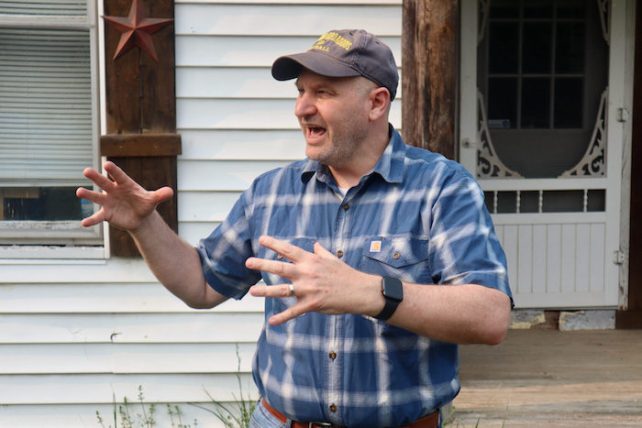
Hunter Mullens, a lawyer in Philippi, West Virginia, talks about property damage he believes was caused by underground coal mining at the home of one of a Taylor County client.
James Bruggers
Still, some of the pain he has experienced in his lifetime might be attributed to the coal industry. He said his father died at 55 of complications from lung and breathing issues, with coal dust and black lung disease suspected as a factor.
Arch has accepted its obligations to Taylor County landowners in the past and needs to do so again, Mullens said. In February, the company posted a record net income of $1.3 billion for 2022.
“We are not opposed to coal mining, but the people should be treated fairly,” Mullens said. “And they should be safe.”
For visitors rumbling along the back roads of Taylor County, the telltale signs of subsidence and leaky methane are newly constructed homes with white methane vent pipes in the front, side or back yards. Mullens points to road cracks and slumps in the pavement resulting from mining operations that were later repaired.
In one lawsuit, his clients Tim and Vanessa Carr are pressing Arch to pay for damages to their two-story farmhouse, which was built by Tim’s great-grandfather in the early 1900s. They moved out after plaster fell from the ceiling of their daughter’s bedroom three years ago, frightening her. The home’s foundation and walls also cracked, the couple stated in their lawsuit.
“We woke up one morning and we heard a pop, and we thought somebody shot the window,” Tim Carr said in an interview. “The window exploded. Later in the day, another window exploded.”
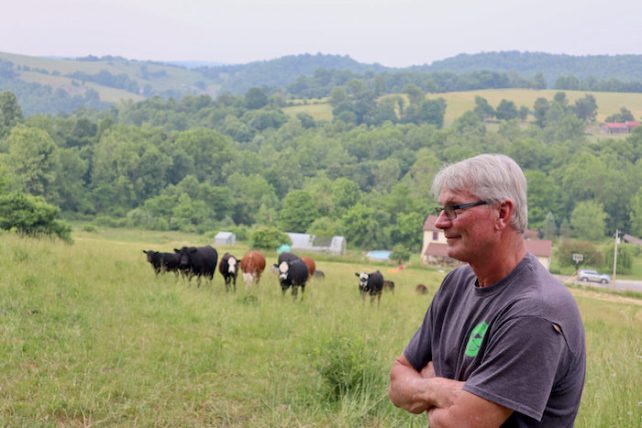
Chuck Foley of Taylor County, and his wife, Tammy, sued Arch Resources, claiming property damage, loss of well waters, and leaking methane after coal was. mined from under their farm.
James Bruggers
Tammy and Chuck Foley, also clients of Mullens, raise cattle on a hillside farm that has been in Tammy’s family for decades. They contend that coal mining underneath their property cracked buildings, dried up springs and water wells and released methane gas.
Chuck Foley, a former Barbour County administrator, is uncertain how long that arrangement will last and is looking for a settlement that accounts for damage to his house and several other buildings on the property.
The Foleys say that one of the first clues that they had a problem was when water shot 10 feet out of a well near one of three homes on their property. The coal company installed a methane vent.
Tammy Foley’s parents were living in that house at the time, and she recalls her mother telling her what it was like for them when the house was “creaking, and cracking and heaving” in 2020, just before she died.
“They were both 70 or 80 years old, sitting there with this house fallen down,” she said. “Then her doors wouldn’t open to the basement, and we noticed the front steps were all cockeyed.”
Her father is now living in a nursing home. Chuck Foley said it saddened him to recall what his wife’s parents had to confront “right at the end of life.’’
“We just want to get it settled and move on with our lives,” he said of the the lawsuit against Arch.
In court papers, Arch has denied liability for the damages the Carrs and Foleys described.
Jim Nestor has lived on his farm since 1991. It covers about 67 acres that he inherited from his previous wife, who died of cancer in 2005.
After moving out last summer, Jim and Melissa Nestor found a temporary place to live that was 21 miles away. For months, they made the 42-mile round trip twice a day to feed their animals, a costly and time-consuming trek along winding country roads.
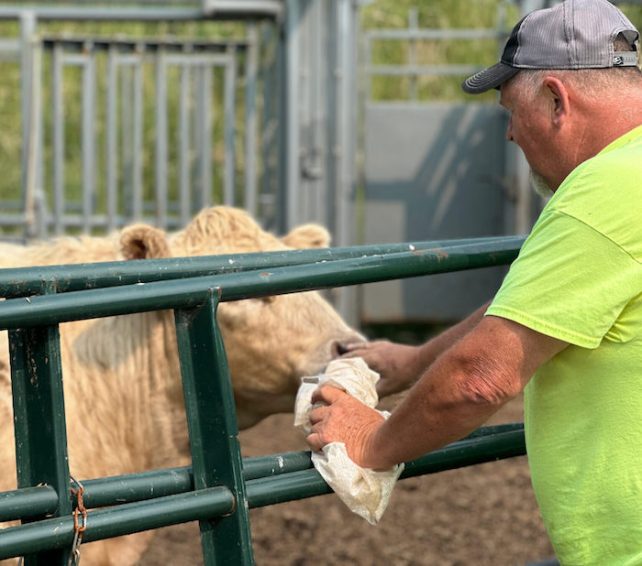
Jim Nestor at his farm in Taylor County, where he and his family have been unable to live since last summer due to leaking methane.
James Bruggers
Now renting a house about a mile away, they have found that the extra expenses continue to mount even if they are closer to their animals. They’ve had to sell a quarter of their herd, which formerly numbered around 40 cattle, to make ends meet.
Even though they currently have access to public water, that’s an unaffordable long-term solution for animals that each drink 30 gallons per day, the Nestors said.
“I don’t want to be rich or anything,” Jim Nestor said. “I just want my house and my farm. I don’t think that’s too much.”
